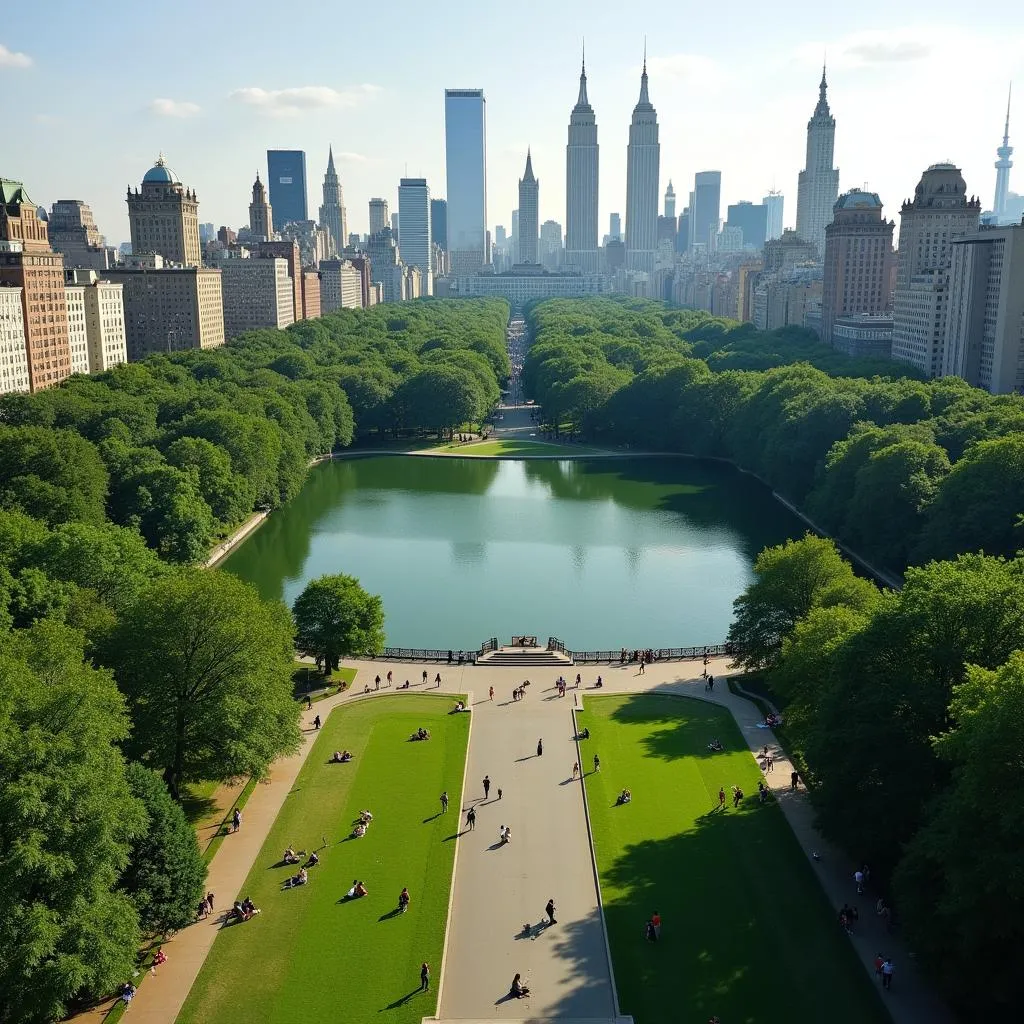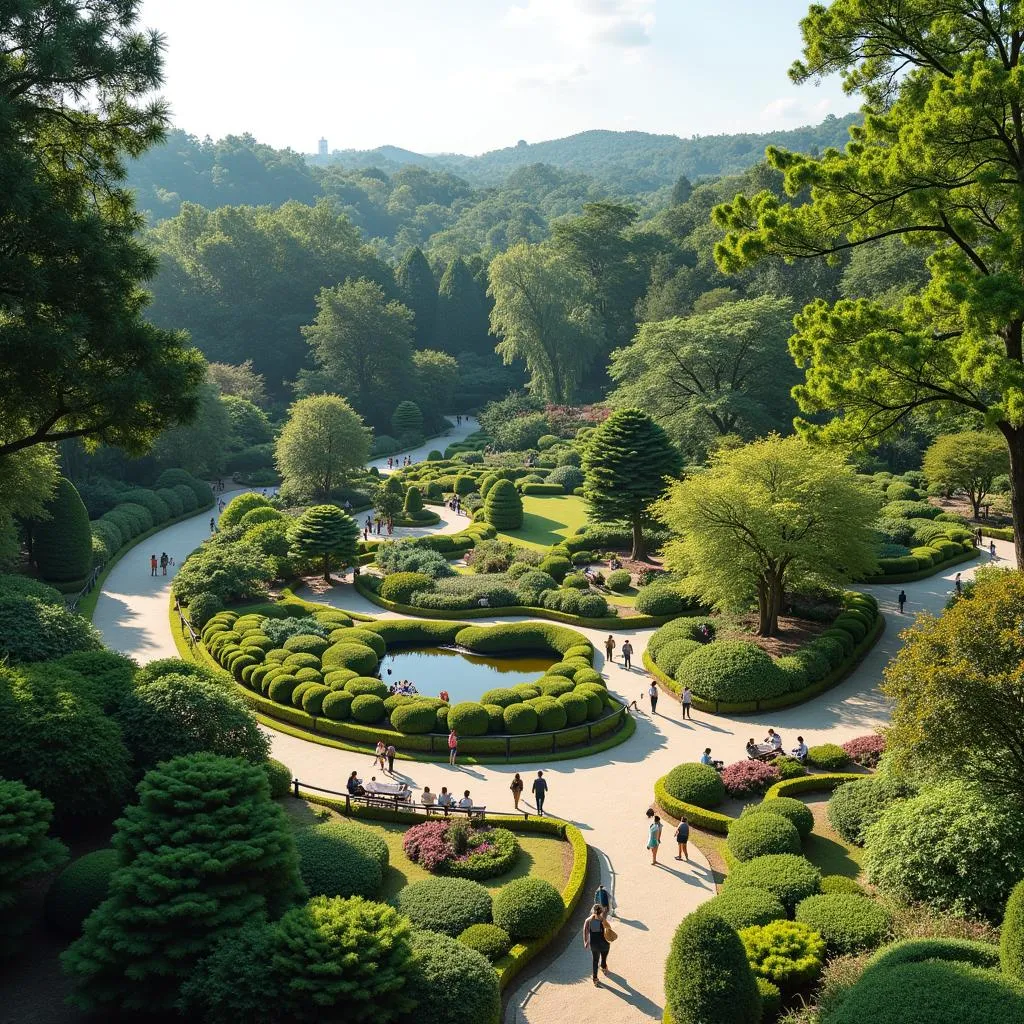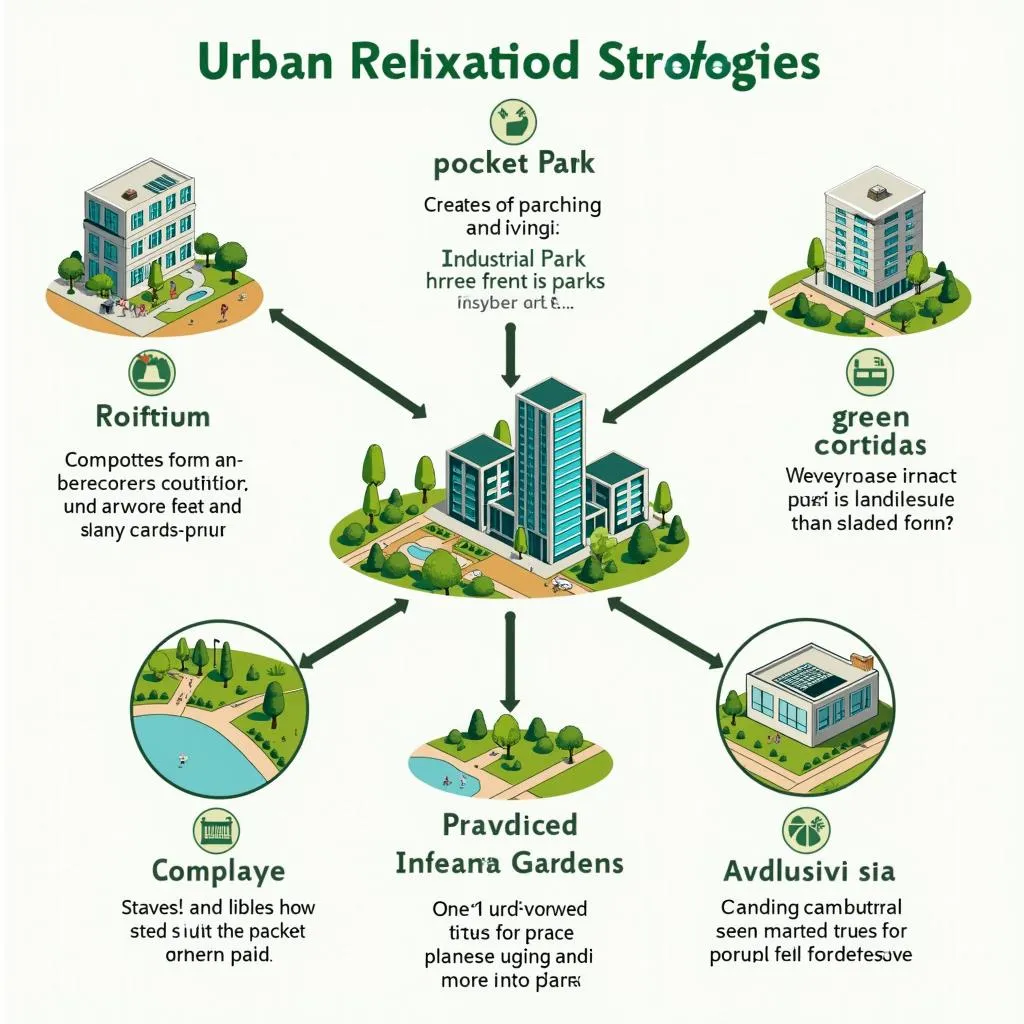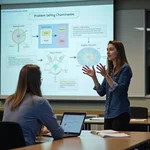Describing a place where people go to relax is a common topic in IELTS Speaking exams. This theme has appeared frequently in past tests and is likely to remain relevant in future examinations. The ability to articulate your thoughts about such locations effectively can significantly impact your overall speaking score. Let’s explore how to tackle this topic comprehensively across all parts of the IELTS Speaking test.
Part 1: Introduction and Interview
In this section, the examiner may ask you general questions about relaxation and places in your city. Here are some potential questions and a sample answer:
- Do you have a favorite place to relax in your city?
- How often do you visit relaxing places?
- What activities do people usually do to relax in your city?
Sample answer for question 1 (Band 7-8):
“Absolutely. My go-to spot for relaxation is Central Park in the heart of our city. It’s a vast green oasis amidst the urban landscape, offering a perfect escape from the hustle and bustle of city life. The park has numerous amenities like walking trails, picnic areas, and even a small lake, making it an ideal destination for anyone looking to unwind.”
 Central Park as a relaxation spot in the city
Central Park as a relaxation spot in the city
Part 2: Long Turn
Here’s a sample cue card related to the topic:
Describe a place in your city where people go to relax
You should say:
- Where it is
- What it looks like
- What people do there
- And explain why you think it’s a good place for relaxation
Sample answer (Band 8-9):
“I’d like to talk about the Botanical Gardens, a serene oasis located in the eastern part of our city. This expansive green space spans over 50 acres and is renowned for its diverse collection of plant species from around the world.
The gardens are a visual feast, with meticulously manicured lawns, vibrant flower beds, and winding pathways that lead visitors through various themed sections. There’s a picturesque Japanese garden complete with a koi pond and traditional wooden bridges, a rose garden that bursts into color during spring, and a tranquil water garden with lily pads and gently flowing streams.
People visit the Botanical Gardens for a variety of relaxing activities. Many come to simply stroll along the paths, taking in the natural beauty and fresh air. Others find peaceful spots to read, meditate, or practice yoga. Families often have picnics on the lawns, while photography enthusiasts capture the stunning flora on camera. The gardens also host occasional outdoor concerts and art exhibitions, providing cultural relaxation as well.
I believe it’s an excellent place for relaxation because it offers a complete escape from the urban environment. The lush greenery and abundance of flowers create a calming atmosphere that instantly soothes the mind. The gardens’ vast size ensures that even on busy days, visitors can find quiet, secluded spots to unwind. Moreover, the diversity of plant life provides a constant source of interest and natural beauty, making each visit a refreshing experience. The combination of visual appeal, fresh air, and peaceful ambiance makes the Botanical Gardens an ideal retreat for anyone seeking relaxation in our city.”
 Botanical Gardens as a relaxation spot in the city
Botanical Gardens as a relaxation spot in the city
Possible follow-up questions:
- Are there any other popular relaxation spots in your city?
- How has the importance of relaxation places changed over time in urban areas?
Sample answer for question 2 (Band 8-9):
“The significance of relaxation spaces in urban areas has undoubtedly grown over time. As cities have become more densely populated and fast-paced, the need for easily accessible havens of tranquility has intensified. In the past, relaxation might have been more associated with home environments, but now, public spaces dedicated to unwinding are increasingly valued.
This shift is partly due to the rising awareness of mental health and work-life balance. People are now more conscious of the need to disconnect from digital devices and reconnect with nature. Additionally, as living spaces in cities have become smaller, public relaxation areas serve as extensions of people’s homes, providing much-needed space for leisure activities.
Moreover, these spaces have evolved to cater to diverse relaxation needs. We’re seeing more multi-functional areas that combine natural elements with facilities for exercise, social interaction, and cultural activities. This evolution reflects a broader understanding of relaxation, encompassing physical, mental, and social well-being.
In essence, relaxation places in urban areas have transformed from simple parks to vital components of city infrastructure, crucial for maintaining the quality of life and overall health of urban populations.”
Part 3: Two-way Discussion
In this section, the examiner will ask more abstract questions related to the topic. Here are some potential questions and sample answers:
- How do you think urban planning can contribute to creating more relaxation spaces in cities?
Sample answer (Band 8-9):
“Urban planning plays a crucial role in creating relaxation spaces within cities. Effective urban design can integrate green spaces and relaxation areas seamlessly into the urban fabric. This could involve repurposing underutilized areas, such as converting old industrial sites into parks or creating rooftop gardens on public buildings.
Planners can also implement policies that require new developments to include public relaxation spaces. This might involve mandating a certain percentage of green space in residential complexes or encouraging the creation of pocket parks in densely built areas.
Moreover, urban planners can focus on connectivity, ensuring that relaxation spaces are easily accessible by public transport or through pedestrian-friendly routes. This could involve creating green corridors or linear parks that link different parts of the city, serving both as relaxation spaces and alternative transportation routes.
Another important aspect is the design of these spaces. Urban planners can work with landscape architects to create multi-functional areas that cater to various relaxation needs, from quiet contemplation zones to areas for active recreation. They can also incorporate elements of biophilic design, which brings nature into urban environments, enhancing the relaxation potential of these spaces.
Ultimately, effective urban planning for relaxation spaces requires a holistic approach, considering not just the quantity of these areas, but their quality, accessibility, and integration with the broader urban environment.”
 Urban planning for relaxation spaces in cities
Urban planning for relaxation spaces in cities
- Do you think the concept of relaxation varies across different cultures? How?
Sample answer (Band 7-8):
“Yes, I believe the concept of relaxation does vary significantly across different cultures. These variations are often rooted in historical, social, and philosophical differences.
For instance, in many Western cultures, relaxation might be associated with individual activities like reading a book, watching TV, or going to a spa. There’s often an emphasis on ‘me time’ and personal space. In contrast, some Eastern cultures might view relaxation more as a collective activity. In Japan, for example, communal bathing in onsen (hot springs) is a popular form of relaxation.
The pace of relaxation also differs. Some cultures value active forms of relaxation, like going for a run or practicing yoga, while others prioritize more passive forms like meditation or simply sitting in nature. In some Mediterranean cultures, the concept of ‘siesta’ – a midday rest – is integral to daily life, which is less common in many other parts of the world.
Religious and spiritual practices also influence relaxation concepts. In some cultures, prayer or religious rituals are seen as primary means of relaxation and stress relief. In others, secular mindfulness practices have gained popularity.
Moreover, the settings for relaxation vary. While some cultures seek relaxation in quiet, natural environments, others find it in bustling social settings like cafes or markets.
It’s important to note that these are general observations, and individual preferences within cultures can vary widely. As our world becomes more globalized, we’re also seeing an increasing exchange of relaxation practices across cultures, leading to new hybrid forms of relaxation.”
Key Vocabulary and Phrases for High Scores
-
Oasis (noun) /əʊˈeɪsɪs/: A peaceful, pleasant place that is very different from everything around it.
Example: “The park is an oasis of calm in the busy city center.” -
Tranquil (adjective) /ˈtræŋkwɪl/: Peaceful and quiet.
Example: “The botanical gardens offer a tranquil escape from urban life.” -
To unwind (verb) /ʌnˈwaɪnd/: To relax after a period of work or tension.
Example: “Many people visit the beach to unwind after a stressful week.” -
Serene (adjective) /səˈriːn/: Calm, peaceful, and untroubled.
Example: “The serene atmosphere of the meditation center helps visitors relax.” -
Rejuvenate (verb) /rɪˈdʒuːvəneɪt/: To give new energy or vigor to; to refresh.
Example: “A walk in nature can rejuvenate both mind and body.”
Describe a recent social gathering you attended for more practice on discussing social activities and relaxation.
Examiner’s Advice
To score high in the IELTS Speaking test when describing a relaxing place:
- Use a variety of descriptive adjectives to paint a vivid picture.
- Incorporate idiomatic expressions naturally to demonstrate language fluency.
- Provide specific details and examples to support your points.
- Use a range of tenses appropriately to discuss past experiences and present observations.
- Practice speaking about different types of relaxation places to broaden your vocabulary.
Remember, the key to success is not just knowing what to say, but how to say it fluently and naturally. Regular practice with a variety of topics will help you describe an interesting place you have been to with a friend or any other relaxation spot with confidence.


